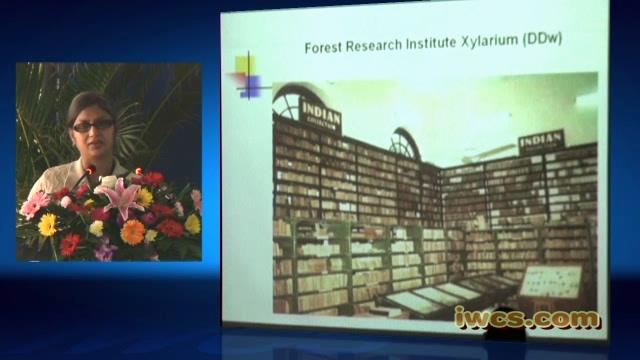会议名称:2010木文化国际研讨会——古木文化产业和遗产保护与修复
会议时间:2010年10月23日-24日
会议地点:中国·陕西
报告嘉宾:Sangeeta Gupta
首席科学家 印度林业研究中心
报告摘要:India has a rich biodiversity with numerous temperate, sub-tropical and tropical wood species. The same is abundantly reflected in its ancient culture and traditional wood uses also. The people worshipped forests and a large number of sacred ceremonies centered on trees. We still have sacred groves that are worshipped.
Wood remains are of special significance in unraveling the past and throws interesting light on past civilizations and vegetation. In India, Forest Research Institute (FRI), Dehradun established in 1906 is the pioneer organization in forestry research, education and extension. Its large depositories of herbarium, wood, insects, fungi, seeds, fruits etc. act as reference material both for identification and research. The Wood Anatomy Discipline of FRI has been carrying out wood identification for the entire nation since past several years.
The presentation shall deal with a recent study being carried out on confiscated wooden artifacts in the form of sculptures, boxes and beds belonging to 14th -19th centuries. Based on very small wood chips taken out from the artifacts, the wood identification work was carried out. The artifacts were found to be made up of Juniperus species, Madhuca longifolia (Mahua), Tectona grandis (Teak), Pterocarpus marsupium (Bijasal), Ficus species and Acacia species. All these woods except for Ficus are well known woods famous for their durability and strength. The choice of species of these woods for furniture and sculptures is indicative of good knowledge of wood properties during those times as the ancient civilizations were using the same species for the said purpose as it is scientifically approved today.
责任编辑:iwcs24P


 9,800
9,800

